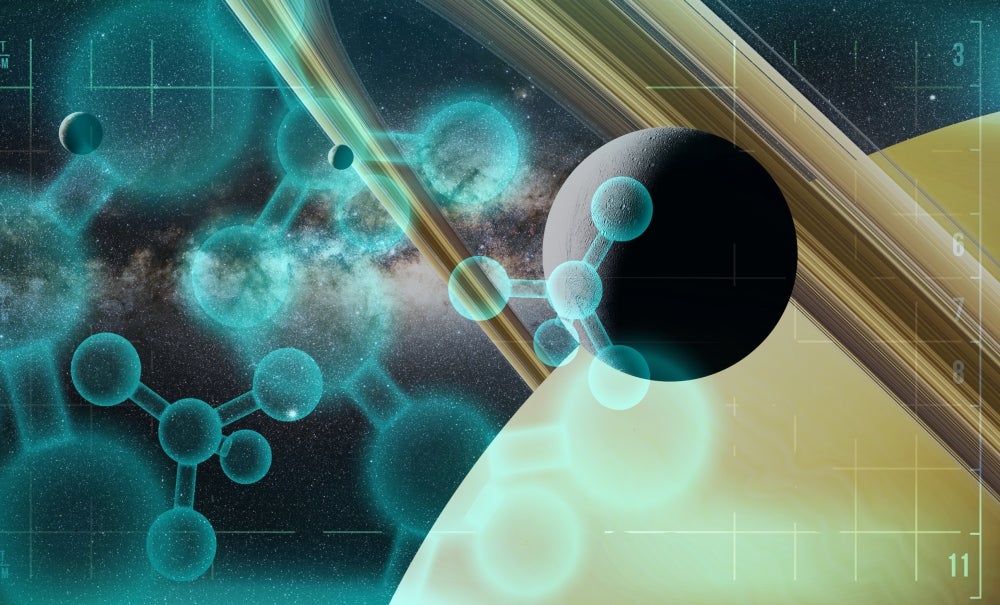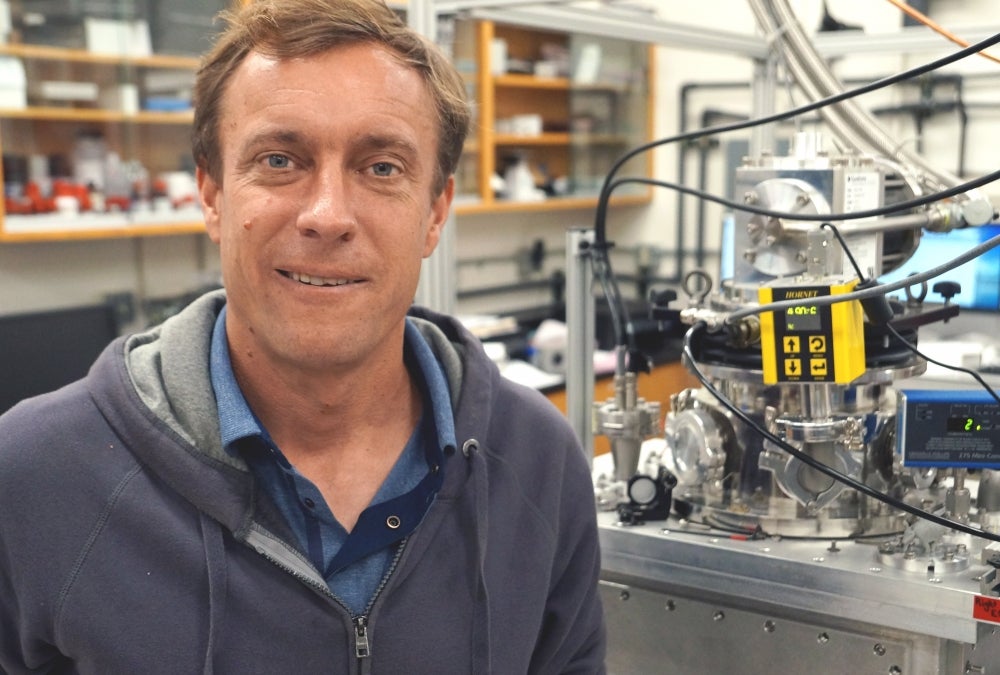
Moonshot

For UC Santa Barbara assistant professor David Patterson, the joy of being a scientist is getting to dive into the unknown, armed with the best of his knowledge and propelled by sheer curiosity.
“One of my friends told me that every scientist should have a moonshot in their plan,” said Patterson of the type of endeavor that, while perhaps not particularly profitable in the near-term, could eventually bring mankind one giant leap closer to understanding the universe and our place in it.
Thanks to the David and Lucile Packard Foundation’s Fellowship for Science and Engineering, Patterson is preparing to take that leap. As one of 18 Packard Fellows for 2018, Patterson has been awarded the funding to follow his curiosity, an effort that could lead to insights into the mechanics of nature far beyond our own horizons.
“We are just thrilled that Professor Patterson has been awarded the prestigious Packard Fellowship, a meaningful recognition of his dedicated and innovative research that places him among an impressive list of renowned Fellows,” said Chancellor Henry T. Yang. “Through the support of this fellowship, we look forward to David’s continued exceptional contributions to the study and control of molecules in single quantum states.”
Patterson’s research centers on atomic, molecular and optical physics, which operates on some of the smallest size and energy scales we know. He is particularly interested in the physics of molecules, which he describes as complex and as yet difficult to control.
“One way to think about it is that we can do lots of good physics with atoms, but that’s kind of like building with children’s blocks,” he explained. Molecules, by contrast, are akin to sophisticated erector sets, which could do a lot more, he said, if we knew how to control them.
Among the challenges of working with molecules is characterizing them — the current methods for which tend to fundamentally alter or destroy them. That’s all well and good if one has a steady supply of molecules to work with. But what if the sample size is very small? Like, say, a handful of rare molecules gathered from a distant place in our solar system?
This is Patterson’s moonshot.
“There’s a moon of Saturn called Enceladus,” he explained. “It’s icy cold and has cryovolcanos on it, that eject plumes of molecules into space. The plumes are mostly water, but also include interesting molecules.”
NASA’s Cassini space probe in 2005 made flybys of the satellite, revealing the presence of an underground ocean beneath all the ice, from which these volcanoes shoot water vapor and organic chemicals hundreds of miles into space. The presence of water makes Enceladus a relatively likely candidate for life, and in 2018, scientists confirmed the detection of complex organic macromolecules from these plumes.
“You have liquid water and you have chemistry going on and you have a source of energy going on,” Patterson said, adding that while it doesn’t prove the existence of life out there, clues are tantalizing enough to merit a closer look.
Hoping to take this look, Patterson is building an instrument that ideally would examine molecules sampled from Enceladus. In particular, this instrument would analyze the molecules’ chirality, or “handedness.”
“Many molecules come in ‘left-handed’ and ‘right-handed’ versions,” Patterson explained. Like your hands, many molecules have structures that make them asymmetrical, and thus don’t allow them to match up when superimposed on one another. This asymmetrical geometry extends to our DNA helices.
“Every normal DNA molecule has a right-handed spiral,” Patterson said, whether they be in humans, plants or animals. And the reason, he continued, is that at some point in our deep past we all had a common ancestor with a right-handed DNA spiral. Molecular reproduction “runs very naturally to handedness,” he said, and it is this fundamental pattern that Patterson would try to detect in the molecules of Enceladus.
He offered an analogy: “You can build a car perfectly well with left-handed screws. You can build a car perfectly well with right-handed screws. But it’s probably a bad idea to build a car with a mixture of the two types of screws. And that’s sort of what we’re saying.”
The goal is to build a chiral analyzer so general that it could examine a variety of single molecules without destroying them — an instrument that would have an assortment of important applications on Earth, from basic research in physics and in chemistry to innovations in pharmaceuticals and materials. Ultimately, using this technology to analyze samples from beyond Earth — either via an instrument on a spacecraft or by analyzing returned samples — would be a powerful litmus test for life elsewhere in our solar system.
“So, what we’re trying to build is very new,” Patterson said. At the moment, the machine is as big as a lab, and not as reliable or productive as the kind one would want in a space probe, but it’s a start. Bouyed by the $875,000 award (over five years) from the Packard Foundation, Patterson and his colleagues are poised to make some serious progress in this endeavor.
“I’m super thankful for this award and something I really appreciate about the Packard Foundation is how much their philosophy and their attitude is curiosity-driven,” he said, “meaning that they see the best science is coming from people who are just saying ‘what would happen if?’, or ‘what’s out there?’”
“In fact, the return on investment from fundamental research is very high,” Patterson continued. “But it takes a long time. So, for someone to tell me to follow my curiosity, follow my passion, I couldn’t imagine a better compliment.”
Patterson joins a distinguished group of big thinkers from universities across the country, many of whom are pursuing groundbreaking work that has led to some of the biggest scientific discoveries of the last 30 years. Packard Fellows have gone on to receive a range of accolades, including the Nobel Prize in Chemistry and in Physics, the Fields Medal, the Alan T. Waterman Award, MacArthur fellowships and elections to the National Academies. The fellows also gather at annual meetings to discuss their research, where conversations have led to unexpected collaborations across disciplines.
“It really is amazing to see what brilliant researchers can do when given the room to take big risks,” said Frances Arnold, chair of the Packard Fellowships Advisory Panel, a 2018 Nobel Laureate in Chemistry and a former Packard Fellow. “And I’m not only talking about their impressive contributions to their fields — I’m also talking about building entirely new disciplines and giving back to the next generation of scientists. I’m excited to see what’s in store for this new class as it joins our welcoming community of fellows.”



